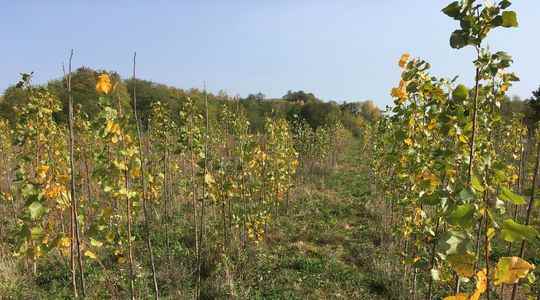In the 1950s, a landscape of metals and smoke structured by seven blast furnaces visible from the road stood out to visitors to Homécourt, a small town near Metz. In this complex, the mine, the furnaces and the steelworks cohabited, linked together by winding rails. More than 300 people worked there and the factory frequently colored the sky with the substances that escaped from it. In the early 2000s and after the closing and demolition of the factory, it was motocross that animated the site. Until 2016 when the story took a rural turn: a plot was then dedicated to the cultivation of trees specifically reserved for energy production. A new virtuous but still rare use. “For a long time, cities wanted to expand and abandoned the abandoned land that was within their walls. Only today, wasteland takes on a new value”, observes Laurent Château, national coordinator of wasteland and polluted soils at the Ecological Transition Agency (Ademe).
Growing interest. The reclassification of wasteland as biomass production land has two major advantages: supporting the energy transition and participating in the renaturalization of soils. These soils, which are often polluted, are a means of boosting the bioenergy sector without them entering into competition with food agricultural land. Plants or trees can be grown there, which are then burned to generate thermal or electrical energy. In concrete terms, they are used as fuel to heat water, which will then be distributed to heating systems. They can also be gasified to run an engine and generate electricity. For the moment, the use of biomass, combining the use of wood but also organic, household or stationery waste, represents only 1.4% of the energy produced in France in 2019 according to the Transport Network of electricity (TEN).
Grow trees and plants on polluted soils
But the potential is there, and projects like Homécourt’s are spreading. Most of the time, in response to public calls for projects and with the support of researchers. In the Chemistry Valley, near Lyon, a Seveso-classified area is in full transition. If it is not polluted, the human activities that can take place there are extremely limited. A plot of this valley, a former car park, has been dedicated to the production of biomass. Whether for the Homécourt project or in the chemical valley, artificial soil had to be laid. Produced from the treatment of site earth, it avoids extracting tons of topsoil elsewhere, a noble material, and the costs that go with it.
A new soil also makes it possible to make the land quickly productive because it is placed above the infertile or polluted one and also avoids the heavy financial investments essential to resuscitate it. Moreover, this soil is specially designed to receive the planned crop. “The aim of the process was to design a specific cooking recipe for each use. Thus, each plant had its own soil”, specifies Geoffroy Séré, professor at the University of Lorraine and at the National Research Institute for Agriculture. , food and the environment (Inrae), associated with this project. In both cases, once the earth was in place, wood designed for use in the boiler room was planted.
Another approach was preferred in Carrières-sous-Poissy, in Yvelines, where for several decades wastewater from the city of Paris was spread. Miscanthus, a plant that can replace wood to generate heat, was grown on a 55-hectare site. It has thus made it possible to enhance the land in terms of energy with a co-benefit that is anything but insignificant: the restoration of soil quality over the long term thanks to the ability of miscanthus to absorb heavy metals.
Still limited productivity
Has the time then come for the boom in wastelands used to make biomass? Not quite. It is still difficult to assess the productivity of the process. Each abandoned land obeys its own characteristics and it is estimated on average that the productivity is about a third lower, sometimes even half, than that of arable land. The idea of a massification of these projects also runs up against the slowness of the administrative procedures, the lack of political enthusiasm or even the opposition of local residents worried about seeing a polluted area being exploited near their homes.
Ademe did not receive any application for this type of requalification during its call for projects, closed last April, to finance this type of conversion. According to his own words, building stock, reindustrialisation projects, urban farms or cultural facilities are more popular than the use of wasteland for energy purposes. This reluctance can be explained by the lack of guarantees of sufficient returns and a sector that is still in its infancy.
Yet Europe is betting massively on biomass. Even before the war in Ukraine broke out, the strategy to achieve carbon neutrality by 2050, published in November 2018, stressed that more biomass should be produced even though the agricultural area would not increase or only slightly increase. . Using some of our 7,000 listed wastelands, including old abandoned gas stations and dilapidated industrial sites, would therefore be a way of finding the space we are missing.
